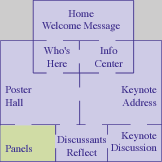Posted by:
Susan Snyder
Posted on: May 09, 2002 at 12:17 AM
Message:
Mark,I understand your argument and you may be right about the best risk for NSF capital. In fact, I would argue that in addition to a current infrastructure I would want some type of assurance the there would be ongoing support from the top. However, the problem with this argument is two fold. First, some of the neediest districts would be left out of the competition. Many of these district are reorganized so often that they will have a different structure from the writing of a grant to its submission. This very turmoil is related to the quality of the education system. Such districts often need the pressure of an outside funder to stay the course or to put in place the type of infrastructure needed. Though many such projects may have disappointing results, there are some significant success stories. Second, given that the outside funder is just a small player in reform, perhaps it is important for them to make investments that have the potential to create examples of what reform could look like. Such investments are made on the basis of the vision and the personnel leading the effort. I wonder how much slower science or mathematics reform would have been at the elementary level if NSF had waited for requests from districts with the infrastructure you describe before making an award. Perhaps NSF needs to develop programs that allow for much longer projects for reforming districts. (It is my guess that most of the LSCs would agree.) Using your analogy, some of NSF?s most successful scientific discoveries come from laboratories that have been funded for much longer than five years. However, it is difficult, if not impossible, for NSF to ignore the fact that it is expected to distribute its activity and funding across the country. Susan
| 

